


|
1820 |
The Cato Street Conspiracy, aimed at killing members of the British cabinet and bringing down the government, is discovered. Its leader, Arthur Thistlewood, is hanged for treason.
Muhammad Ali of Egypt, having seized most of Arabia, occupies northern Sudan. Later, in a dispute with the Sultan, he takes over the Turkish state of Syria in 1831 (W4).
The Danish scientist Hans Christian Oersted discovers a direct relationship between electricity and magnetism. His research is carried much further by the French physicist André Marie Ampère.
The beautiful part-
Following popular revolts in Spain, Naples and Portugal, the Congress of Troppau, led by Austria, Russia and Prussia, plans to use force if necessary to maintain the old order.
The English writer Charles Lamb begins writing his famous Essays of Elia. Also a literary critic, he numbered among his friends the essayist William Hazlitt and the poet John Clare. |
|
1821 |
In Greece a war breaks out to overthrow Turkish rule. It succeeds in 1829 following the intervention of Russia, Britain and France. Terms are drawn up at the Treaty of Adrianople.
France and Britain begin to establish colonial territories along the coast of West Africa, the French in Senegal and the British in Sierra Leone, the Gambia and the Gold Coast.
The French scientist Augustin Fresnel proves the wave theory of light mathematically. Lenses improved by his revolutionary design are put to use in lighthouses and theatres.
The English landscape artist John Constable paints his famous work The Hay Wain. In his lifetime he gains little recognition at home, but his work is much admired in France. |
|
1822 |
The Austrian composer Franz Schubert writes his “Unfinished” Symphony. He composed a wealth of music, but in his day was chiefly known for his vast production of tuneful songs.
The English essayist Thomas De Quincey publishes his major work, Confessions of an Opium-
After years of research the French scholar Jean François Champollion deciphers the hieroglyphics on the Rosetta Stone, laying the foundation for Egyptian archaeology. |
|
1823 |
The US President, supported by Britain, sets out the Monroe Doctrine, warning European States against any further colonisation in the Americas. The warning is heeded.
The English mathematician Charles Babbage begins work on his “difference engine”, an automatic mechanical calculator. He conceives the idea of a digital computer in 1833 (W4).
|
|
1824 |
Britain sees action in two colonial wars,
the First Anglo-
The freedom fighter Simon Bolivar, after overthrowing Spanish rule in New Granada (1819), Venezuela (1821), and Ecuador (1822), takes part in the liberation of Peru.
The French neo- rival, the romantic painter Eugène Delacroix, produces his Massacre of Chios.
|
|
1825 |
In Russia, the Decembrist Uprising, led by a group of young army officers, attempts to overthrow the new Tsar, Nicholas I, and introduce reforms. It is ruthlessly crushed.
The French astronomer and mathematician
Pierre- on Celestial Mechanics, begun in 1799, and including his law of universal attraction.
|
|
1826 |
The American novelist James Fenimore Cooper writes The Last of the Mohicans, the best known of his series of five adventure stories about life along the American frontier.
The young German composer Felix Mendelssohn, aged 17, produces his Overture to A Midsummer Night’s Dream. Three years later he begins composing his Fingal’s Cave.
|
|
1827 |
Following research into the function of the kidneys, the English physician Richard Bright describes the clinical conditions of nephritis, commonly known as “Bright’s disease”.
The French inventor Joseph Niépce produces the world’s first permanent photograph from nature, a blurred view of his back yard. His research is continued by Louis Daguerre. Alessandro Manzoni, the great Italian novelist, completes his masterpiece, the historical romance The Betrothed. His works include an ode to mark Napoleon’s death in 1821.
The first part of Birds of America is published by the American naturalist and artist John Audubon. This work, noted for its exquisite bird illustrations, is completed in 1838. |
|
1828 |
The British explorer Charles
Sturt discovers the Murray and Darling Rivers in south- Australia. Exploration also takes place in Central Africa and the Antarctic and Arctic.
|
|
1829 |
The British home secretary Robert Peel, founds the London police force and, fearing a rebellion in Ireland, led by Daniel O’Connell, carries through the Catholic Emancipation Act.
The Treaty of Adrianople ends the
Russo-
Captain Charles Fremantle, having taken possession of the west coast of Australia for the British crown, founds the Swan River Settlement and the towns of Perth and Fremantle.
The Polish pianist and composer Frédéric
Chopin gives his first public performance at Vienna, aged 19. He
composes one of his well- |
|
1830 |
The Englishman William Cobbett, a leading social and political reformer, publishes his Rural Rides, a work highlighting the poverty and suffering of the farming community.
George IV dies towards the end of June. Having no legitimate heir, he is succeeded by his brother, the Duke of Clarence, who becomes William IV. |
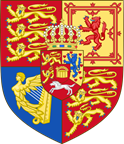






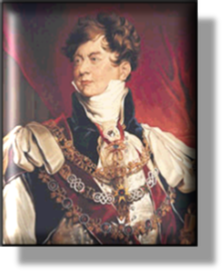 xxxxx
xxxxx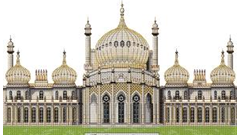 xxxxx
xxxxx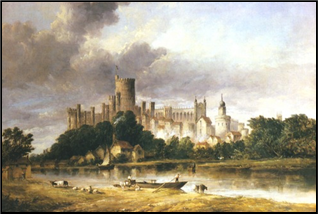 al
Pavilion at Brighton. In addition, Windsor Castle was given a bold
and imaginative new exterior, and the interior was transformed
into one of the finest palaces in Europe. Unfortunately, whilst
the nation was the long term beneficiary of such grandiose
schemes, at a time of extreme social hardship these architectural
projects were seen as wildly extravagant and wholly unjustified.
It is perhaps not surprising that an attempt was made upon his
life in 1817, and that public discontent should spill over in the
so-
al
Pavilion at Brighton. In addition, Windsor Castle was given a bold
and imaginative new exterior, and the interior was transformed
into one of the finest palaces in Europe. Unfortunately, whilst
the nation was the long term beneficiary of such grandiose
schemes, at a time of extreme social hardship these architectural
projects were seen as wildly extravagant and wholly unjustified.
It is perhaps not surprising that an attempt was made upon his
life in 1817, and that public discontent should spill over in the
so-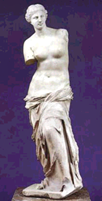


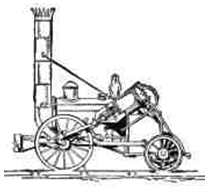 The
first railway to carry passengers is opened in the North of
England from Stockton to Darlington. The work of the English
engineer
The
first railway to carry passengers is opened in the North of
England from Stockton to Darlington. The work of the English
engineer 
